

Can we determine the boundaries of perceived reality - where does the reality begin and end? The images we have created are based on the cognitive functions and combined with our acquired knowledge. These perceptions are processed by our mind and they create our interpretive reality. Systems exhibiting signs of artificial intelligence try to mimic these processes.
The interpretation of reality also takes place in the dialogue between Emma and the robot. In the given image, a photograph from an urban environment is used as a background for the conversation. The installation admits the installation of photography and its presence draws our attention to the dystopic perception of the dialogue, as the simulation of the urban environment is located in the interior of the studio.
During the conversation, the robot is perceived as a thinking empathic being, but its autonomous understanding of the world as well as its authenticity is questioned by the objects already mentioned. In addition to its autonomy, the dialogue with the robot is man-made on the basis of suggestions from children. In our research, children had the opportunity to ask the robot questions - what they would like to teach him, how he would like to be called, how he could help us or how he would show emotions. We also included children in the research because they can express their opinion immediately and honestly.
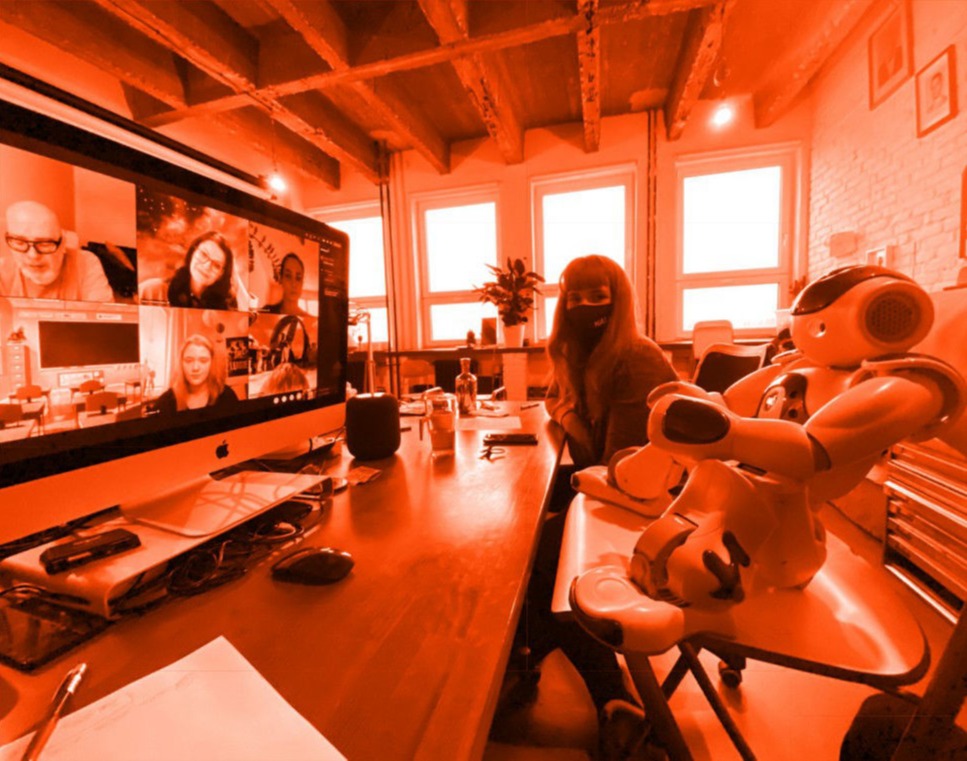
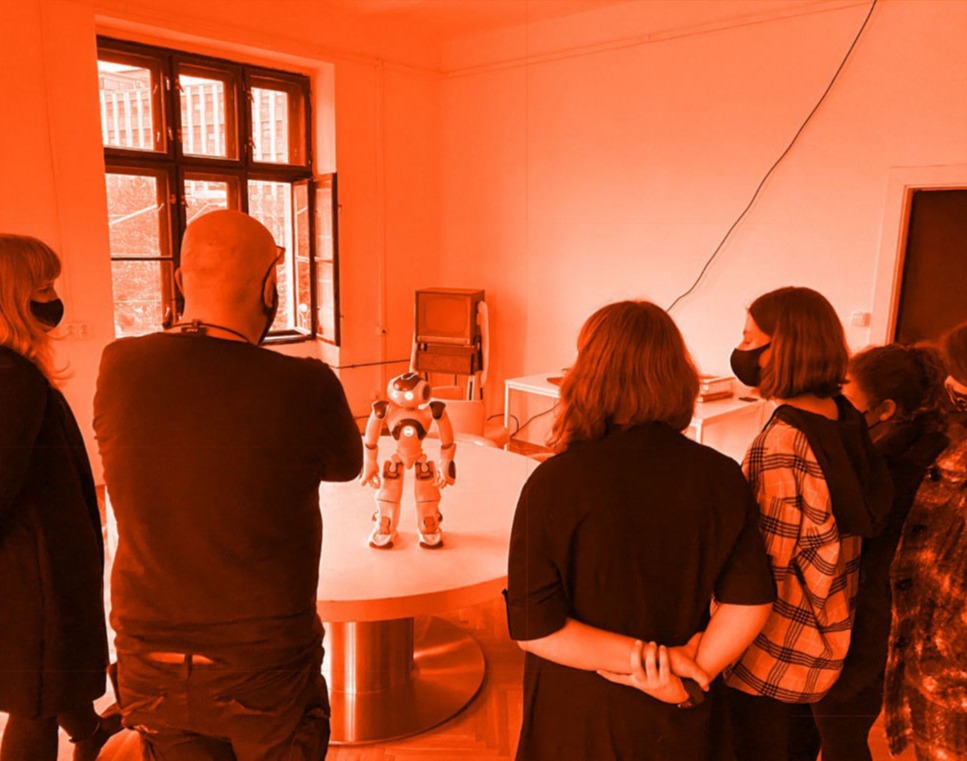
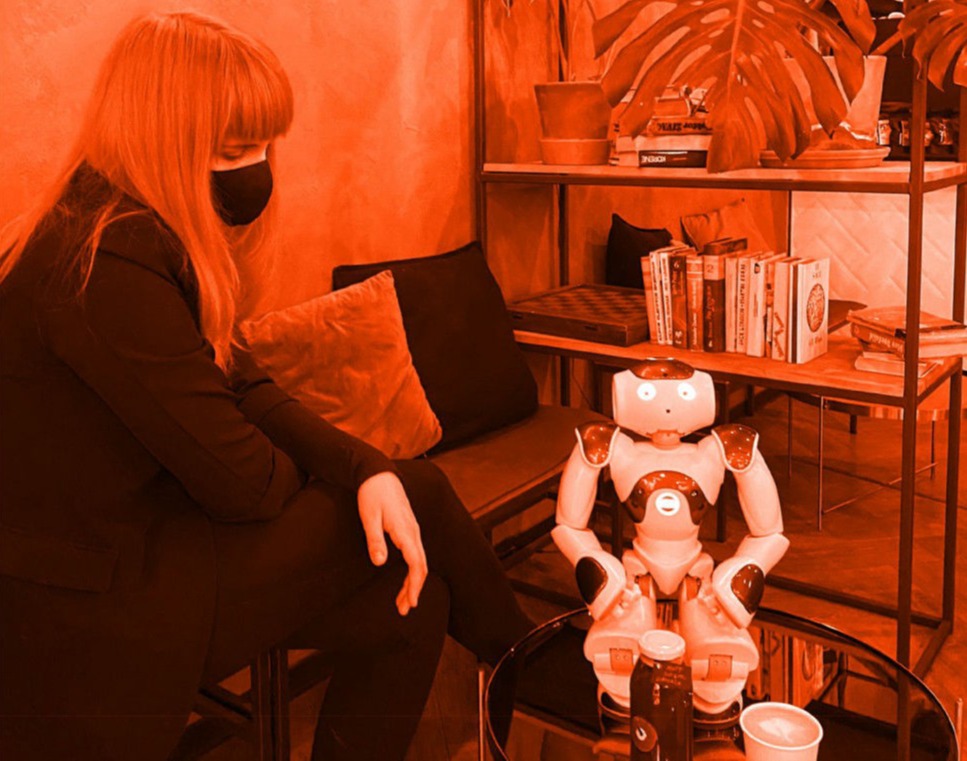
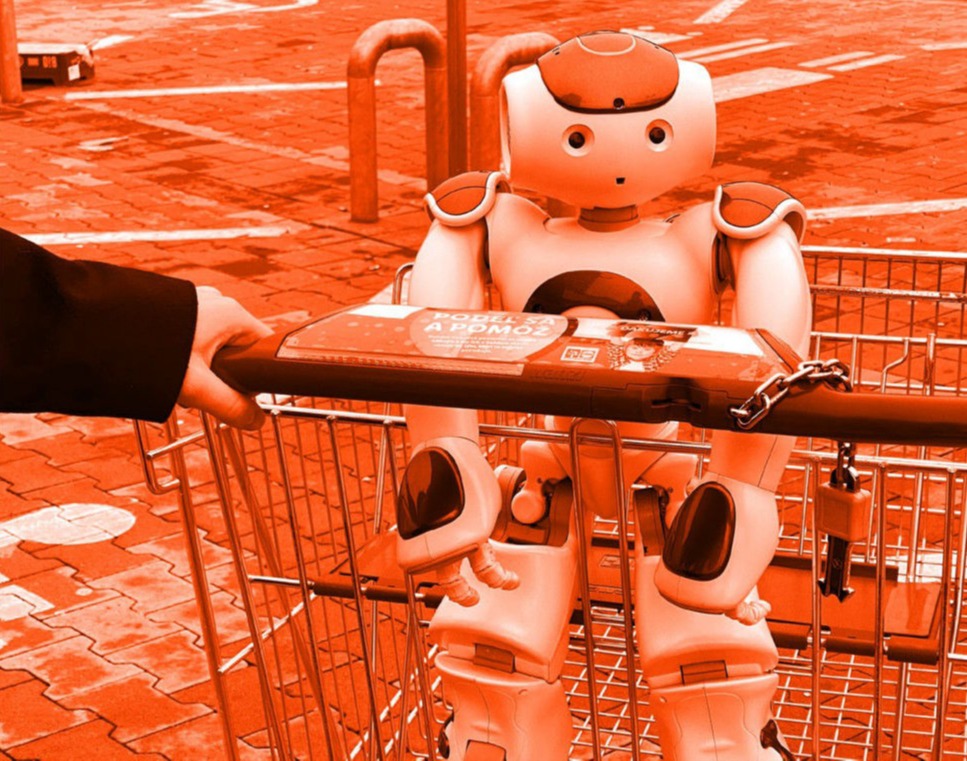
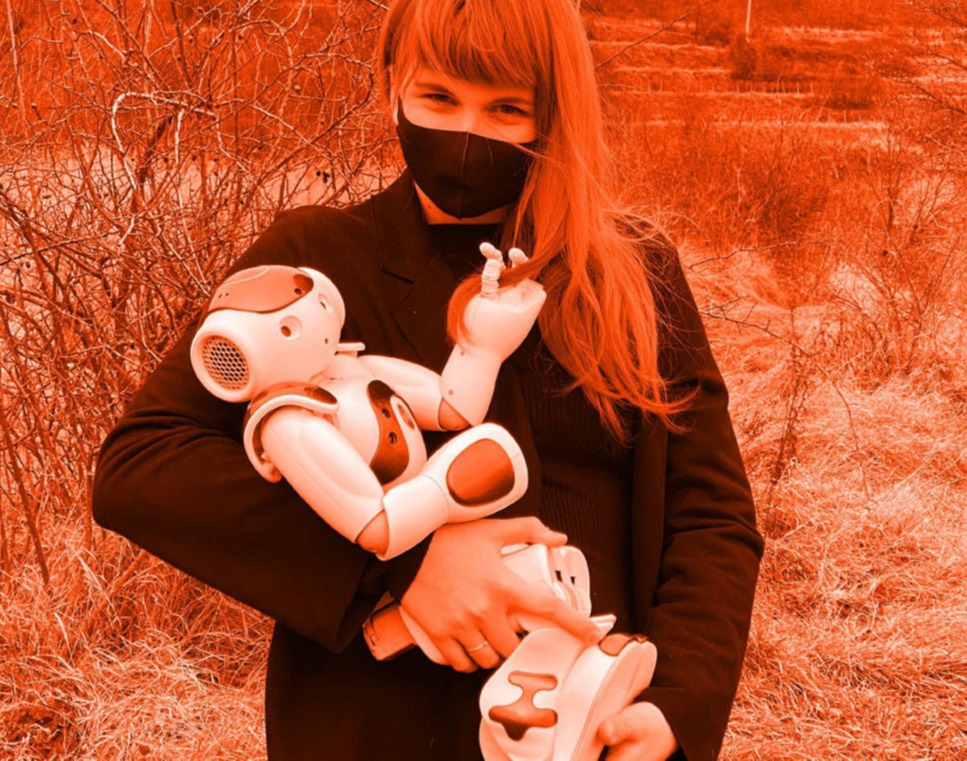
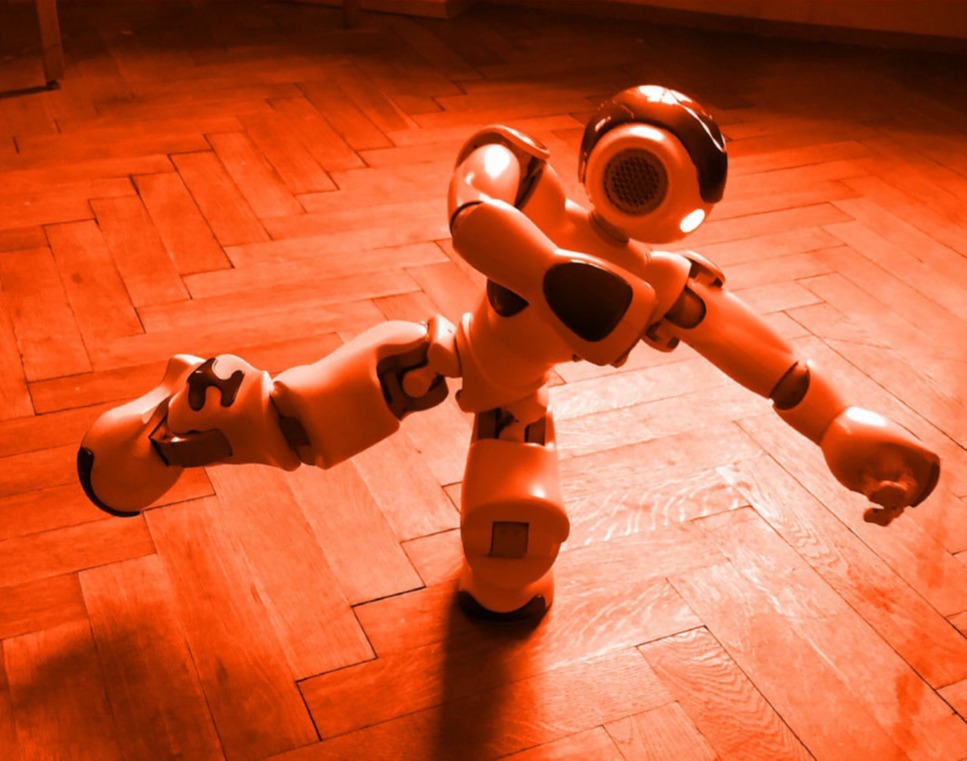

For several decades, we have been able to see the growing influence of the technology, artificial intelligence and robotic machines on our society. The promotion of these elements through mass-communication instruments influences their acceptance and our dependence on them. Throung one small device, we communicate with the world using social networking apps, we use games for entartainment downloaded from the market store, we use the camera to preserve our experiences, and thanks to GPS satellites, we will never get lost again. The smartphones are microcomputers which carry more and more data about us. Our dependence on these devices is growing.
Just as we form a relationship with lovebrands, it can be expected that we will form a stronger bond with various devices. It is also likely that intelligent robots will not only become our helpers or entertainment in our free time. For some, robots become a substitute for living partners. Here we get to the threshold of the ethical level; moral ethics in robotics is already discussed among the philosophers, for example in the publication Robotic Ethics by Janina Loh from 2019. This law publication deals with the moral rights of robots. There are also increasing cases where courts allow the marriage of a man with a sex doll. There is also a discussion about certain rights that robots could have if they reached some level of an intelligence.
Thanks to technologies and digital media, communication is made easier for us even during the pandemic. Experts more often emphasize that we are losing the ability to communicate with each other, because technology allows us to escape from the natural interaction with another person. Technologies, intelligent robots and digital media can also be used to our advantage, but we must be careful when working with them.

From my point of view, this topic is a mirror of the speed of modernization and robotization these days. The robot has artificial intelligence, but the project is just about its simulation, a kind of blurring of unpredictability or a vision of what the future might look like. Will it have a choice? Will it be surprising? Will it have its own desires? Today, this illusion creates our imagination and thoughts.
"When a robot reaches a certain level of development, it could theoretically be granted certain rights that allow it to move more independently in a human society," wrote Janina Lohová, who deals with the moral rights of robots in the book Robotic Ethics.
The impact of robots is likely to be greater in the future. Currently, there is no special law for robots, but there is a non-binding technical-moral orientation, a safety insurance in the so-called "laws of robotics", defined by Isaac Asimov:
1. A robot must not knowingly harm a human being or allow it to be harmed by its inaction.
2. A robot must obey the command of man, except in cases where these orders are in conflict with the first law.
3. A robot must protect itself from damage, except where such protection is contrary to the first or second law.
4. A robot may do whatever it wishes, except where such conduct is contrary to the first, second or third law.
5. A robot must be aware that it is a robot. (additional law)
The limit of the robot's influence is defined by these rules. So the brake will not be humility, but laws - respect for life, for man and for artificial intelligence. However, the humility and power of the robot depends on the humility of its creators.

Until now, a robot was not conceived as an emancipated, free being with social responsibility - and this is exactly what made its use more attractive from the very beginning. The question, then, is whether it makes sense to develop an "empathetic" technique at all. "In order to be empathetic, we need to be able to feel the same way as the other one," said lawyer Susanne Beck in a radio show. We will never be able to teach it machines. In addition, the question is, what exactly should robots "feel" - should they have the same range of feelings as humans or their own emotional categories?
Many new robots look like humans or carry human traits. This is also the case for military and sexual robotics. "Military robots are incredibly fascinating," says Lohová. It is perhaps more important to ask ourselves what we need these robots for and why they have to look like a terminator.
- Magazine JÁDU

Built with Mobirise page maker